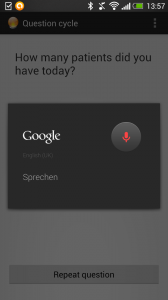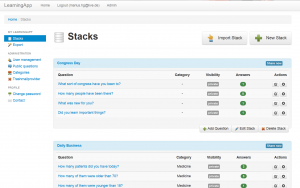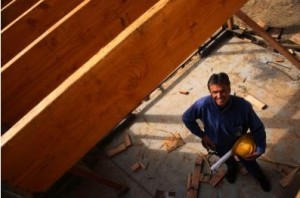Looking back at three years of Learning Layers – Part Two: Role of research in construction pilot
In my previous post I drew attention to the fact that the EU-funded Learning Layers (LL) project is preparing for the review of the Year 3. This has given rise to consider the development of the project and our activities as an evolution of the context and development of the actors and activities working in the context. In the first post I discussed the challenges of the early phase and the responses of the project. In the second post I will discuss the role of accompanying research in the construction pilot. I will also make some remarks on the role of research dialogue within the project and across the boundaries of the current LL project.
1. Interaction between theoretical work and co-design activities in construction pilot (Year 2 and Year 3)
In the beginning of the Year 2 the Learning Layers project agreed to organise a “Theory Camp” activity with lengthy preparatory phase, and intensive symposium during the Y2 Integration Meeting in Aachen and a follow-up phase. This activity brought into picture the specific interactive relations between theoretical work and co-design activities in the construction pilot.
A considerable part of the contributions to the Theory Camp articles represented different aspects of learning, knowledge development etc. or different accents on design processes. These were to be applied to the fields of application via design processes that focus on specific problems and respective tools. As a contrast, the research partners in construction sector build upon the experience of participative innovation programs that have emphasised the social shaping of work, technology and work organisations from the perspective of whole work processes and holistic occupational qualifications, see Landesprogramm Arbeit und Technik, Bremen (Deitmer 2004); BLK-Programm Neue Lernkonzepte in der Dualen Berufsausbildung (Deitmer et. al. 2004). In this respect the research partners in construction pilot drew attention to themes ‘acquisition of work process knowledge’ (see also Fischer et al. 2004) and ‘vocational learning’ in their contributions.
In the follow-up phase the research partners worked with the themes ‘reviewing accompanying research’ (ECER 2014) and ‘reviewing activity theory’ (Bremen conference 2015). With this theoretical and methodological work the research partners reviewed the theoretical insights and discussed experiences with developmental research approaches, such as the ‘change laboratory processes’ and ‘expansive learning cycles’ (based on the work of Yrjö Engeström and affiliated project teams).
As a consequence, the research partners were in the position to work in the complex and manifold process of designing and developing Learning Toolbox with sufficient openness. This was needed to give time for capacity building and growing readiness for co-development (on all sides of the process). This was also crucial for making the toolsets appropriate to support (holistic) vocational learning and enhancing (holistic) work process knowledge. This has required manifold feedback loops and intensive reporting from field workshops. In this way the research partners in construction pilot have supported process dynamics that have enabled the application partners to become themselves the drivers of the piloting with Learning Toolbox in their own trades (Bau-ABC trainers) or in their specific contexts and activities to promote ecological construction work (Agentur and the affiliated network NNB).
2. The role of research dialogue – internal and external
In the light of the above it is worthwhile to emphasise that the construction pilot has not been developed in isolation. Instead, research dialogue activities – both internal (with LL partners) and external (with other counterparts) have played an important role in the development of the project. The internal research dialogue activities have been shaped by working groups that focused on transversal themes – such as ‘contextual knowledge’, ‘trust’ – that were equally relevant to both pilot sectors. This work has been covered by other colleagues with their contributions to the reports. In this context I wish to draw attention to two threads of external research dialogue:
a) Exhanges on Activity Theory and Developmental Work Research
As I have mentioned above, this thread was taken up by the ITB team as a follow-up of the Theory Camp and pursued further in a workshop of the Bremen International VET conference (see the report in my recent post). Here it is worthwhile to note that we gathered experiences on the use of Change Laboratory methodology in intervention projects and of theory of Expansive Learning as an interpretative framework in comparative projects. Also, we engaged ourselves in critical re-examination of some concepts used in Activity Theory (such as Vygotsky’s concept of ‘mediation’ and concepts like ‘contradiction’ and ‘transformative practice’). These discussions will be continued as the LL project proceeds deeper to the exploitation of results.
b) Exchanges of parallel approaches to intervention research
Already in ECER 2014 (in Porto) the ITB team had started a cooperation with researchers from HAN University of Applied Sciences with focus on intervention research (see the report in my earlier blog). This was followed up in the Bremen conference and in ECER 2015 (in Budapest). In the Budapest session the colleagues from HAN presented a new project that focuses on practice-based learning in HE programs with strong vocational elements. In this context they worked further with process models and with ‘stealthy intervention’ strategies. In a similar way a Danish project from the National Centre for Vocational Education presented a ‘Vocational Education Lab’ approach for promoting innovations and networking across vocational schools. (See the report in my recent post.) Also these exchanges will be continued when the LL project proceeds with the exploitation activities.
– – –
I think this is enough for the moment. We are now looking forward to next steps with our fieldwork and our exploitation activities.
More blogs to come …




